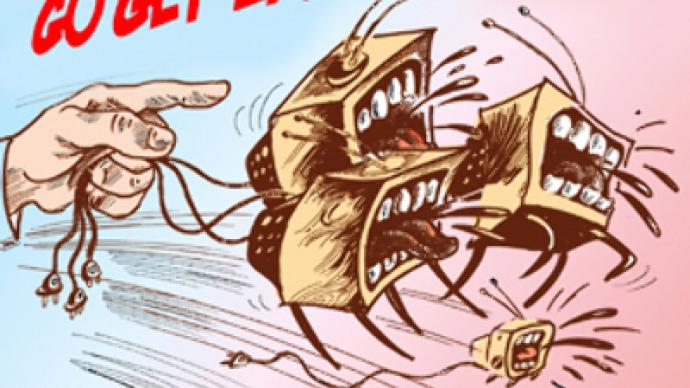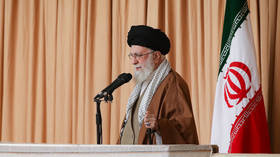Spin–a–war: Spin-an-America

How 18th Century spin affected the image of the American Revolution in Russia.
In 1776, media spin in its modern form was not yet born, but its absence only added to the strength and longevity of a more ancient kind of spin, disseminated through the few existing newspapers, a multitude of books and brochures, and by word of mouth.
Russians traveled to America before the War of Independence, during the war and after it. The travelers wrote and published their accounts of life in America and of the war, of the relations between the Colonists and London-appointed officers of state, of the attitudes to each other of the both sides. But these books, published once each and in very few copies, didn’t make a difference to the way the Russian public viewed the conflict in America. Instead, books published in France, full of spin and pro-American bias, played the main role in the choice of sides that the Russian public took on the issue of America.
It took months for any news from America to cross the Atlantic. The point of delivery of the news on the European side of the ocean was paramount to its further impact: if the news landed in Britain and told of, say, the signing of the Declaration of Independence, it was really bad news. The same information landing in France at about the same time was definitely good news.
From Britain and France, the two different messages describing the same event spread through the continent, causing discussions among the best-educated few, who then sought to impress their conclusions on the minds of other educated people, perhaps a little less-educated then themselves, by means of newspapers and books of various sizes. Statistically, these educated readers were an insignificant minority in the population of their nations, however they held economic and political power in their hands, so it was they who created public opinion and made decisions.
In Russia the reading minority consisted mostly of the nobility, the clergy and partly the wealthy merchants. The system was centered on the Monarch and, luckily for America, the Monarch of the time was Catherine the Great, who was very fond of liberty as a concept for every nation on Earth, excluding Russia (Her Imperial Majesty considered proclaiming liberty in Russia to be the first, irreversible step to chaos), and who also was at the time at odds with Britain. These two factors combined to create an atmosphere in which the British point of view lost its value by default.
Between 1776 and 1793, several dozen titles of books on the American Revolution were imported from France to St. Petersburg and Moscow bookshops, by mail order and by Russian travelers. Several such books were even translated into Russian (in spite of the fact that most Russian nobles spoke and read French). While from England, only a few volumes were brought into Russia, to be buried deeply in the private libraries of a few courtiers.
It is hard to say what came first, Russia’s policy of “Armed Neutrality” (the Russian Navy was even part of an international effort blocking British arms shipments to America) or pro-American public opinion. It seems that both came simultaneously, with the Empress eager to counterbalance British ambitions, and the public wholeheartedly supporting the American revolutionaries as they were portrayed in the French books published in the last decade before the French Revolution: noble at heart, always in peace and harmony with nature, living on simple and healthy foods.
This romantic image – described by an American author who visited Russia at the time as a ‘mixture of a warrior, a statesman and a forest mage’ – was so widespread that even in the newly-settled Siberia, at the provincial governors’ dinner tables, the guests discussed America.
The Russian nobility of the time were feudal, owning and using serfs for labor. Some of the nobles had already come to the understanding that the system of serfdom had to be abolished, but that thought became the focus of public opinion only seventy years later, in the 1860s. But slavery never prevented the majority of Russian nobles from hailing the new system of government emerging in America. Even Radishchev, the great Russian poet and author, and direct predecessor of Pushkin, a liberal-minded noble himself, sang praise to George Washington in his famous “Ode to Liberty.”
Maybe the fact that slavery was also common in America at the time, and that Washington himself owned slaves, helped to bridge the gap between the mentality of Tsarist Russia and Republican U.S. … Jokes aside, the massive fascination with the American Revolution in the late-18th Century Russia is a historical fact. It is also a fact that this fascination was caused to a great extent by the spread in Russia of French accounts of the Revolution published in 1776–1789. And there is another fact which looks very strange at the first glance: the severely negative reaction of Russian society to the French Revolution that followed on the heels of the American one did nothing to change the overall Russian attitude to the events in America.
It would have seemed logical for the Russian public to draw a parallel between the two, especially with the authors of several books praising the cause of Washington being among the leaders of the French Revolution. But it never happened: the two events remained firmly separate in the Russian consciousness. Maybe it was because the American Revolution had claimed few victims beyond battle casualties, and left behind the grand tradition of fireworks, while the French Revolution left behind a whole bunch of great ideas and a long trail of blood.
The Russian Revolution was also bloody. However, in Soviet times, Russian historians compared it to the American Revolution more often than to the French, at least in one aspect: if the French Revolution destroyed the remnants of feudalism and opened a free road for the development of capitalism, both the American and Russian Revolutions started unique historical experiments aimed at the creation of an absolutely new kind of human society. The Soviet experiment ended in 1991. The American experiment continues, with many of its elements now adopted worldwide, including in Russia.
If the main idea behind it had been to get rid of the European background full of bloodshed, exploitation, unequal rights, and build a new nation from scratch, this was achieved long ago in the U.S. Actually, in the past couple of hundred years, America has grown its own historical background, and due to human nature, it turned out to be as bloody and full of unfairness and suffering as it is full of victories and prosperity – not unlike the backgrounds of other nations in the world.
From a Russian’s point of view, the most valuable among the historical achievements of America are its freedoms. Whatever kind of spin we may encounter in the present and future in connection with the U.S. and its actions, that spin is powerless as long as the freedoms remain intact.
Happy Fourth of July to our American readers!
Evgeny Belenkiy for RT.















